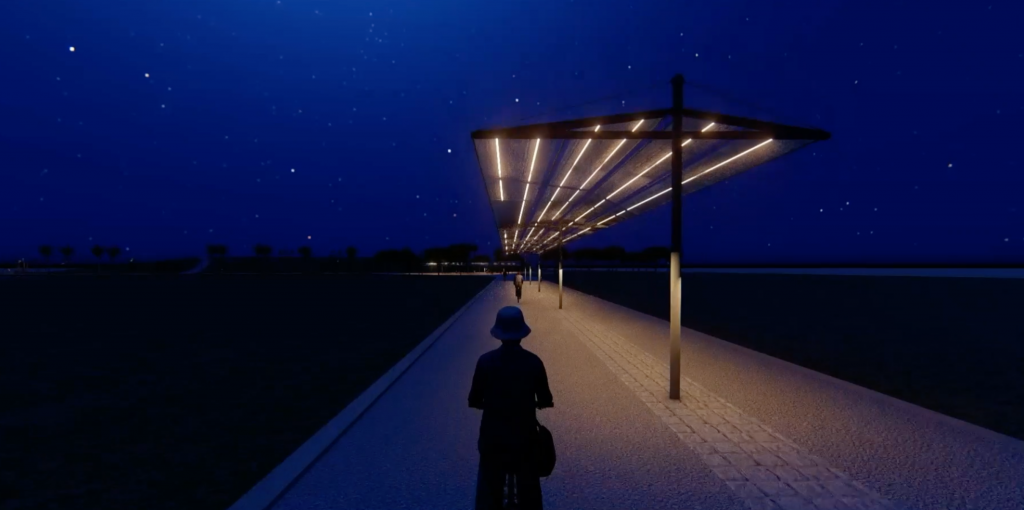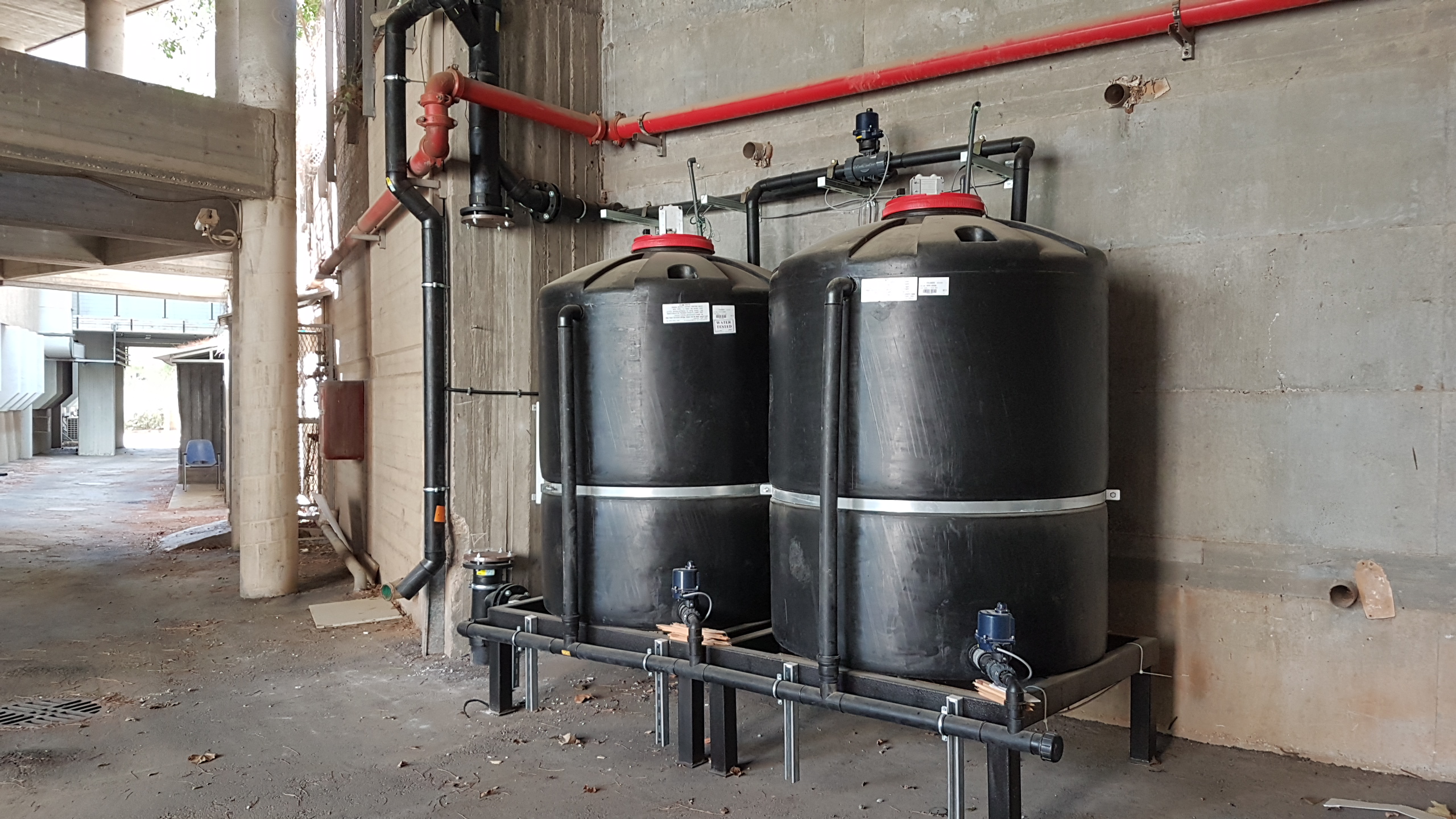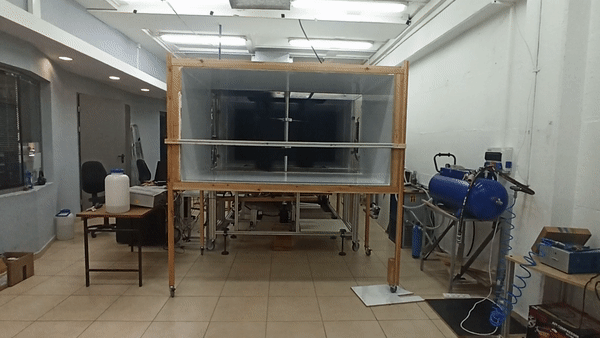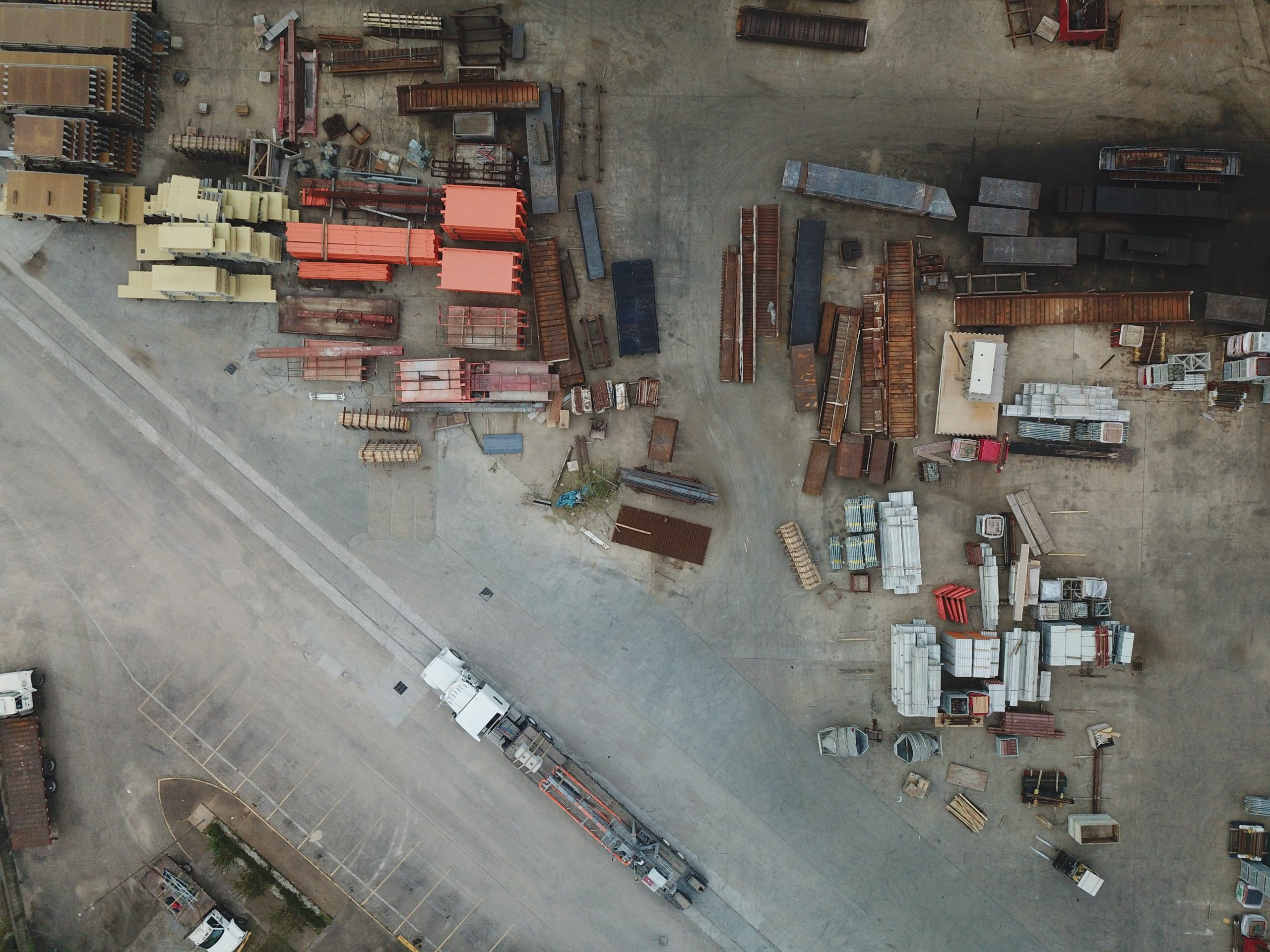Lumiweave – The evolution of light and shade
October 26, 2020Anai Green, this year’s winner of the Women4Climate Tech Challenge, has created a novel outdoor fabric called Lumiweave, combining the benefits of renewable off-the-grid solar energy with day-time shading in one material.
The idea for Lumiweave was born while Green was working on another project for the city of Bat Yam, just south of Tel Aviv. “A friend of mine, who is a landscaper, and I, were hired by the city of Bat Yam to create shade maps and shade walls, for an event called ‘32N Urban Shade’ in 2010,” says Green.
“We installed a very basic vertical structure covered in plants that can be adjusted to provide maximum shade on each side throughout the day. That was the first time I dealt with the issue of shading in the urban area,” she says.
For Anai Green, it was a defining period. She kept mulling over different approaches to shading and lighting, but also light pollution and the issue of excessive heat production in the city, known as the urban heat island effect. The right technology for her idea did not yet exist, and when it became available, it was too expensive.
“I wanted something that combines shading and lighting, while at the same time reduces light pollution – but what I had in mind wasn’t practicable at the time, so I waited. As soon as the materials and technology I needed for my idea became available at an affordable price, I created Lumiweave.”
Green describes Lumiweave as an “advanced multilayer fabric” composed of four layers, each with an individual function. And although the concept itself sounds tangible, the intricate technology that goes into the development of the fabric is everything but simple. “The main components of Lumiweave are a flexible OPV (organic photovoltaic) sheet that is adhered to a UV resistant fabric. This fabric is imprinted with conductive copper-based ink that is acting as a circuit board. Intertwined with this fabric are polymer strips with LEDs.”

Implementation of Lumiweave in Tel Aviv
A pilot of Lumiweave is planned to be implemented in Anai Green’s hometown of Tel Aviv, as soon as a prototype is ready to be deployed. Eitan Ben Ami, the director of the Environment and Sustainability Authority of Tel Aviv, sees a wide range of possible applications for Lumiweave. “The fabric can be used in many public places – any street, park, or parking lot. One of the first locations we thought about implementing Lumiweave is between the train station at Tel Aviv University and the university campus. It’s a long steep walk without any shade. Also, the beach area would be a great place to try Lumiweave. That’s why we like the idea so much, it is widely applicable, and Tel Aviv has an abundance of space that doesn’t have any shade.”
“Also, it does not have to be a permanent installation,” adds Green. “For instance, we usually have many festivals in Israel, and those events consume a lot of electricity. Lumiweave could really be an advantage in such a setting. It’s very flexible and mobile.”
After experts have deemed the concept worth supporting, the municipality has decided to provide the necessary resources to further develop and refine Lumiweave. According to Ben Ami, the city of Tel Aviv is always on the lookout for new innovative ideas that can contribute to the city’s sustainability and livability. “We look anywhere possible for great new innovative ideas, and we very much believe in the potential of Lumiwave,” says Ben Ami.
Various offices and departments are working together in order to provide the best possible support for Lumiweave and to ensure its success in Tel Aviv. As stated by Ben Ami, the Environment and Sustainability Authority is collaborating with different departments of the Tel Aviv Municipality like Tel Aviv Global, the Department for Gender Equality and Women Programs, the Innovation Department, Tel Aviv Hub, and others.
“The collaboration with different partners is what gives us the strength to pursue and successfully implement projects like Lumiweave. This is important to us. That’s why we are still working together with EcoWave, another great climate initiative located in Jaffa, Tel Aviv’s old city, and the winner of the first Women4Climate Tech Challenge last year,” he adds.

Women4Climate Tech Challenge
The Women4Climate Tech Challenge is an initiative by C40, “a network of the world’s 94 largest cities, committed to addressing climate change.” The goal of the Women4Climate Tech Challenge is striving to diversify the innovation sector, which, according to Silvia Marcon, the head of Women4Climate, is heavily dominated by men. “Men outnumber women 5 to 1 in the innovation sector, and men have also historically built most of our cities. We believe that with more diversification – and not only in innovation but the whole STEM sector (Science, technology, engineering, and mathematics) – we will make more progress tackling climate change in cities. We want to inspire and engage young women and create role models that give them the confidence to live up to their potential and become part of a change.”
This year, the Women4Climate Tech Challenge received 105 applications and is looking for ten finalists. The call for applications is open to any woman in any city that is part of the C40 initiative. The goal is to find the best woman-led climate-solutions, whether for city planning, climate change adaptation, renewable energies, or other climate-related concepts, and pair them with cities that are part of the selection process of the challenge.
Marcon emphasizes that the goal of Women4Climate is not only to find the best idea but to ensure that each concept becomes a feasible project that can be incorporated into the urban infrastructure. “Working with the 10 finalists and support them with specific training like pitching and engaging with city officials is part of an important learning process. The presentation and communication of a project are just as vital as the idea itself because it has to match the city’s requirements and planning objectives,” says Marcon.
“Working with C40 projects is different than working with any other project,” says Ben Ami. “C40 really provides the foundation and the support that young ideas need in order to develop. From start to finish, C40 keeps guiding us as a professional team. Just recently, the city of Tel Aviv was the first city in Israel to finish and present its climate adaptation plan before the government, in large part due to the support of C40. It’s a really unique organization,” he adds.
“I’ve already participated in other tech competitions, but I must say none of them were like Women4Climate Tech Challenge. I really felt that the people at C40 cared about me. I received their support and advice every step of the way. It was wonderful. I strongly believe that with the help of C40 and the Tel Aviv Municipality, Lumiweave has the potential to contribute to the city’s sustainability and its climate adaptation,” Green concludes.
This ZAVIT article was also published in Israel21c on 10/22/2020.







